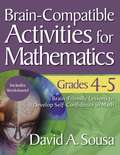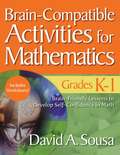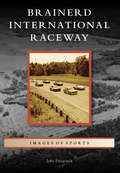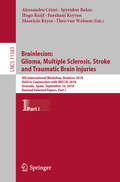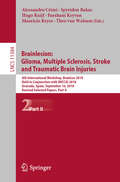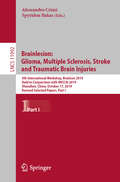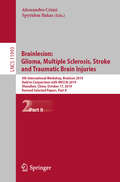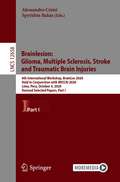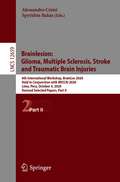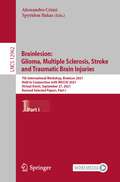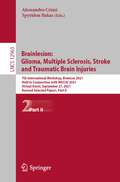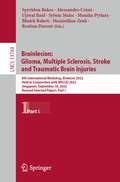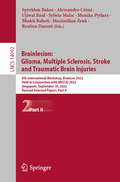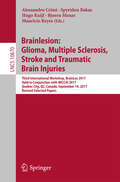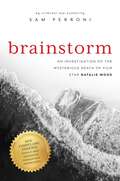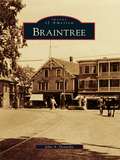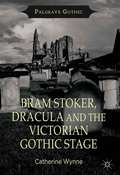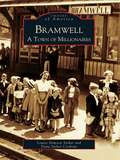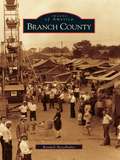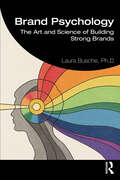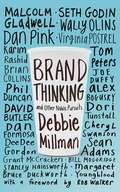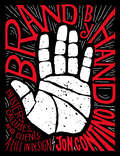- Table View
- List View
Brain-Compatible Activities for Mathematics, Grades 4-5
by David A. SousaBrain-Compatible Activities for Mathematics, Grades 4-5 provides brain-friendly, ready-to-use mathematics lessons for the classroom. Teachers will find step-by-step guidance and all the necessary reproducible materials for mathematics instruction that involves group work, reflection, movement, and visualization. Through activities such as Scuba Division, Party Planners, Sunken Treasure, and Parachute Drop, intermediate learners will enjoy developing skills connected with multiplication and division, fractions and decimals, geometry and measurement, algebra, data analysis, and more.Aligned with NCTM standards and focal points, the instructional strategies enhance motivation and content retention, while addressing individual intelligences. Also included is instruction to:Promote writing as an important learning toolUse concrete models to make concepts meaningfulConnect mathematical ideas to the real worldIncorporate graphic organizers to help students organize their thinkingDeepen and revitalize instruction using Sousa’s proven brain-compatible approach for helping every student develop self-confidence in mathematics!
Brain-Compatible Activities for Mathematics, Grades K-1
by David A. SousaUsing principals from Dr. David A. Sousa’s How the Brain Learns Mathematics, this user-friendly resource provides easy, ready-to-use mathematics lessons for Kindergarten and first grade classrooms. Teachers will find step-by-step guidance and all the necessary reproducible materials for mathematics instruction that involves partners, group work, and class movement. Through activities such as Number Jingle and Math Detective, young learners will enjoy developing skills connected with whole numbers, addition and subtraction, geometrical shapes, measurement, number patterns, and more.Aligned with NCTM standards and focal points, the resources in this book aim to enhance students’ motivation and content retention. Further, the principals in this book:Address individual intelligencesUse concrete models to make concepts meaningfulConnect mathematical ideas to the real worldIncorporate graphic organizers to help students organize their thinkingTeach creative problem solvingDeepen and revitalize instruction using Sousa’s proven brain-compatible approach for helping every child develop self-confidence in mathematics!
Brainerd International Raceway (Images of Sports)
by John FitzgeraldIf it has an engine and anything close to two wheels, Brainerd International Raceway has hosted a race for it. From sports cars, stock cars, drag racers, and the Can-Am Racing Series to motorcycles, snowmobiles, and chump cars, Brainerd International Raceway has been the northern outpost for exciting track action and infield get-togethers since 1968. It has been called one of the best-constructed tracks in the nation, and with several hairpin turns, a backfield with an undulating, curved spine, and a mile-long straightaway on which racers hit speeds of as much as 200 miles per hour, it certainly is one of the finest in the country.
Brainlesion: 4th International Workshop, BrainLes 2018, Held in Conjunction with MICCAI 2018, Granada, Spain, September 16, 2018, Revised Selected Papers, Part I (Lecture Notes in Computer Science #11383)
by Alessandro Crimi Mauricio Reyes Theo van Walsum Spyridon Bakas Hugo Kuijf Farahani KeyvanThis two-volume set LNCS 11383 and 11384 constitutes revised selected papers from the 4th International MICCAI Brainlesion Workshop, BrainLes 2018, as well as the International Multimodal Brain Tumor Segmentation, BraTS, Ischemic Stroke Lesion Segmentation, ISLES, MR Brain Image Segmentation, MRBrainS18, Computational Precision Medicine, CPM, and Stroke Workshop on Imaging and Treatment Challenges, SWITCH, which were held jointly at the Medical Image Computing for Computer Assisted Intervention Conference, MICCAI, in Granada, Spain, in September 2018. The 92 papers presented in this volume were carefully reviewed and selected from 95 submissions. They were organized in topical sections named: brain lesion image analysis; brain tumor image segmentation; ischemic stroke lesion image segmentation; grand challenge on MR brain segmentation; computational precision medicine; stroke workshop on imaging and treatment challenges.
Brainlesion: 4th International Workshop, BrainLes 2018, Held in Conjunction with MICCAI 2018, Granada, Spain, September 16, 2018, Revised Selected Papers, Part II (Lecture Notes in Computer Science #11384)
by Alessandro Crimi Mauricio Reyes Theo van Walsum Spyridon Bakas Hugo Kuijf Farahani KeyvanThis two-volume set LNCS 11383 and 11384 constitutes revised selected papers from the 4th International MICCAI Brainlesion Workshop, BrainLes 2018, as well as the International Multimodal Brain Tumor Segmentation, BraTS, Ischemic Stroke Lesion Segmentation, ISLES, MR Brain Image Segmentation, MRBrainS18, Computational Precision Medicine, CPM, and Stroke Workshop on Imaging and Treatment Challenges, SWITCH, which were held jointly at the Medical Image Computing for Computer Assisted Intervention Conference, MICCAI, in Granada, Spain, in September 2018. The 92 papers presented in this volume were carefully reviewed and selected from 95 submissions. They were organized in topical sections named: brain lesion image analysis; brain tumor image segmentation; ischemic stroke lesion image segmentation; grand challenge on MR brain segmentation; computational precision medicine; stroke workshop on imaging and treatment challenges.
Brainlesion: 5th International Workshop, BrainLes 2019, Held in Conjunction with MICCAI 2019, Shenzhen, China, October 17, 2019, Revised Selected Papers, Part I (Lecture Notes in Computer Science #11992)
by Alessandro Crimi Spyridon BakasThe two-volume set LNCS 11992 and 11993 constitutes the thoroughly refereed proceedings of the 5th International MICCAI Brainlesion Workshop, BrainLes 2019, the International Multimodal Brain Tumor Segmentation (BraTS) challenge, the Computational Precision Medicine: Radiology-Pathology Challenge on Brain Tumor Classification (CPM-RadPath) challenge, as well as the tutorial session on Tools Allowing Clinical Translation of Image Computing Algorithms (TACTICAL). These were held jointly at the Medical Image Computing for Computer Assisted Intervention Conference, MICCAI, in Shenzhen, China, in October 2019. The revised selected papers presented in these volumes were organized in the following topical sections: brain lesion image analysis (12 selected papers from 32 submissions); brain tumor image segmentation (57 selected papers from 102 submissions); combined MRI and pathology brain tumor classification (4 selected papers from 5 submissions); tools allowing clinical translation of image computing algorithms (2 selected papers from 3 submissions.)
Brainlesion: 5th International Workshop, BrainLes 2019, Held in Conjunction with MICCAI 2019, Shenzhen, China, October 17, 2019, Revised Selected Papers, Part II (Lecture Notes in Computer Science #11993)
by Alessandro Crimi Spyridon BakasThe two-volume set LNCS 11992 and 11993 constitutes the thoroughly refereed proceedings of the 5th International MICCAI Brainlesion Workshop, BrainLes 2019, the International Multimodal Brain Tumor Segmentation (BraTS) challenge, the Computational Precision Medicine: Radiology-Pathology Challenge on Brain Tumor Classification (CPM-RadPath) challenge, as well as the tutorial session on Tools Allowing Clinical Translation of Image Computing Algorithms (TACTICAL). These were held jointly at the Medical Image Computing for Computer Assisted Intervention Conference, MICCAI, in Shenzhen, China, in October 2019. The revised selected papers presented in these volumes were organized in the following topical sections: brain lesion image analysis (12 selected papers from 32 submissions); brain tumor image segmentation (57 selected papers from 102 submissions); combined MRI and pathology brain tumor classification (4 selected papers from 5 submissions); tools allowing clinical translation of image computing algorithms (2 selected papers from 3 submissions.)
Brainlesion: 6th International Workshop, BrainLes 2020, Held in Conjunction with MICCAI 2020, Lima, Peru, October 4, 2020, Revised Selected Papers, Part I (Lecture Notes in Computer Science #12658)
by Alessandro Crimi Spyridon BakasThis two-volume set LNCS 12658 and 12659 constitutes the thoroughly refereed proceedings of the 6th International MICCAI Brainlesion Workshop, BrainLes 2020, the International Multimodal Brain Tumor Segmentation (BraTS) challenge, and the Computational Precision Medicine: Radiology-Pathology Challenge on Brain Tumor Classification (CPM-RadPath) challenge. These were held jointly at the 23rd Medical Image Computing for Computer Assisted Intervention Conference, MICCAI 2020, in Lima, Peru, in October 2020.* The revised selected papers presented in these volumes were organized in the following topical sections: brain lesion image analysis (16 selected papers from 21 submissions); brain tumor image segmentation (69 selected papers from 75 submissions); and computational precision medicine: radiology-pathology challenge on brain tumor classification (6 selected papers from 6 submissions). *The workshop and challenges were held virtually.
Brainlesion: 6th International Workshop, BrainLes 2020, Held in Conjunction with MICCAI 2020, Lima, Peru, October 4, 2020, Revised Selected Papers, Part II (Lecture Notes in Computer Science #12659)
by Alessandro Crimi Spyridon BakasThis two-volume set LNCS 12658 and 12659 constitutes the thoroughly refereed proceedings of the 6th International MICCAI Brainlesion Workshop, BrainLes 2020, the International Multimodal Brain Tumor Segmentation (BraTS) challenge, and the Computational Precision Medicine: Radiology-Pathology Challenge on Brain Tumor Classification (CPM-RadPath) challenge. These were held jointly at the 23rd Medical Image Computing for Computer Assisted Intervention Conference, MICCAI 2020, in Lima, Peru, in October 2020.* The revised selected papers presented in these volumes were organized in the following topical sections: brain lesion image analysis (16 selected papers from 21 submissions); brain tumor image segmentation (69 selected papers from 75 submissions); and computational precision medicine: radiology-pathology challenge on brain tumor classification (6 selected papers from 6 submissions). *The workshop and challenges were held virtually.
Brainlesion: 7th International Workshop, BrainLes 2021, Held in Conjunction with MICCAI 2021, Virtual Event, September 27, 2021, Revised Selected Papers, Part I (Lecture Notes in Computer Science #12962)
by Alessandro Crimi Spyridon BakasThis two-volume set LNCS 12962 and 12963 constitutes the thoroughly refereed proceedings of the 7th International MICCAI Brainlesion Workshop, BrainLes 2021, as well as the RSNA-ASNR-MICCAI Brain Tumor Segmentation (BraTS) Challenge, the Federated Tumor Segmentation (FeTS) Challenge, the Cross-Modality Domain Adaptation (CrossMoDA) Challenge, and the challenge on Quantification of Uncertainties in Biomedical Image Quantification (QUBIQ). These were held jointly at the 23rd Medical Image Computing for Computer Assisted Intervention Conference, MICCAI 2020, in September 2021. The 91 revised papers presented in these volumes were selected form 151 submissions. Due to COVID-19 pandemic the conference was held virtually.This is an open access book.
Brainlesion: 7th International Workshop, BrainLes 2021, Held in Conjunction with MICCAI 2021, Virtual Event, September 27, 2021, Revised Selected Papers, Part II (Lecture Notes in Computer Science #12963)
by Alessandro Crimi Spyridon BakasThis two-volume set LNCS 12962 and 12963 constitutes the thoroughly refereed proceedings of the 7th International MICCAI Brainlesion Workshop, BrainLes 2021, as well as the RSNA-ASNR-MICCAI Brain Tumor Segmentation (BraTS) Challenge, the Federated Tumor Segmentation (FeTS) Challenge, the Cross-Modality Domain Adaptation (CrossMoDA) Challenge, and the challenge on Quantification of Uncertainties in Biomedical Image Quantification (QUBIQ). These were held jointly at the 23rd Medical Image Computing for Computer Assisted Intervention Conference, MICCAI 2020, in September 2021. The 91 revised papers presented in these volumes were selected form 151 submissions. Due to COVID-19 pandemic the conference was held virtually.
Brainlesion: 8th International Workshop, BrainLes 2022, Held in Conjunction with MICCAI 2022, Singapore, September 18, 2022, Revised Selected Papers (Lecture Notes in Computer Science #13769)
by Alessandro Crimi Spyridon Bakas Ujjwal Baid Sylwia Malec Monika Pytlarz Bhakti Baheti Maximilian Zenk Reuben DorentThis book constitutes the refereed proceedings of the 8th International MICCAI Brainlesion Workshop, BrainLes 2022, as well as the Brain Tumor Segmentation (BraTS) Challenge, the Brain Tumor Sequence Registration (BraTS-Reg) Challenge, the Cross-Modality Domain Adaptation (CrossMoDA) Challenge, and the Federated Tumor Segmentation (FeTS) Challenge. These were held jointly at the Medical Image Computing for Computer Assisted Intervention Conference, MICCAI 2022, in September 2022. The 46 revised full papers presented in these volumes were selected form 65 submissions.The presented contributions describe the research of computational scientists and clinical researchers working on brain lesions - specifically glioma, multiple sclerosis, cerebral stroke, traumatic brain injuries, vestibular schwannoma, and white matter hyper-intensities of presumed vascular origin.
Brainlesion: 8th International Workshop, BrainLes 2022, Held in Conjunction with MICCAI 2022, Singapore, September 18, 2022, Revised Selected Papers, Part II (Lecture Notes in Computer Science #14092)
by Alessandro Crimi Spyridon Bakas Ujjwal Baid Sylwia Malec Monika Pytlarz Bhakti Baheti Maximilian Zenk Reuben DorentThis two volume-set LNCS 13769 and LNCS 14092 constitutes the refereed proceedings of the 8th International MICCAI Brainlesion Workshop, BrainLes 2022, as well as the Brain Tumor Segmentation (BraTS) Challenge, the Brain Tumor Sequence Registration (BraTS-Reg) Challenge, the Cross-Modality Domain Adaptation (CrossMoDA) Challenge, and the Federated Tumor Segmentation (FeTS) Challenge. These were held jointly at the Medical Image Computing for Computer Assisted Intervention Conference, MICCAI 2022, in September 2022. The 46 revised full papers presented in these volumes were selected form 65 submissions.The presented contributions describe the research of computational scientists and clinical researchers working on brain lesions - specifically glioma, multiple sclerosis, cerebral stroke, traumatic brain injuries, vestibular schwannoma, and white matter hyper-intensities of presumed vascular origin.
Brainlesion: Glioma, Multiple Sclerosis, Stroke and Traumatic Brain Injuries
by Bjoern Menze Alessandro Crimi Mauricio Reyes Spyridon Bakas Hugo KuijfThis book constitutes revised selected papers from the Third International MICCAI Brainlesion Workshop, BrainLes 2017, as well as the International Multimodal Brain Tumor Segmentation, BraTS, and White Matter Hyperintensities, WMH, segmentation challenges, which were held jointly at the Medical Image computing for Computer Assisted Intervention Conference, MICCAI, in Quebec City, Canada, in September 2017. The 40 papers presented in this volume were carefully reviewed and selected from 46 submissions. They were organized in topical sections named: brain lesion image analysis; brain tumor image segmentation; and ischemic stroke lesion image segmentation.
Brainstorm: An Investigation of the Mysterious Death of Film Star Natalie Wood
by Sam PerroniBrainstorm is an amazing five-year probe into the mysterious death of beloved movie star Natalie Wood by a real-life criminal law authority who determinedly pursued the truth in the face of Los Angeles County officials hell-bent on keeping it buried forever. &“After four decades, there is still more to learn about Natalie Wood&’s tragic drowning. Brainstorm is one man&’s passionate quest to unearth the truth.&” —Beth Karas, Host of Oxygen&’s Snapped: Notorious, former prosecutor, and investigative journalist &“If you have any interest in deciding for yourself whether someone got away with the murder of Natalie Wood, this book is for you.&” —Marilyn Wayne, eyewitnessBrainstorm: An Investigation of the Mysterious Death of Film Star Natalie Wood is the first-person account of Sam Perroni&’s probing investigation of the actress&’s death. Through lawsuits, freedom of information requests, and persistent digging, Perroni obtained unseen and confidential files, documents, photographs, and information from long-lost witnesses revealing the true circumstances surrounding Natalie Wood&’s drowning.
Braintree
by John A. DennehyFirst settled in 1634, and incorporated in 1640, the Town of Braintree has a long and distinguished history. "Old Braintree," which originally encompassed what is now Braintree, Quincy, Randolph, and Holbrook, was the birthplace of John Adams, John Hancock, John Quincy Adams, and Sylvanus Thayer. Primarily a farming community for almost three centuries, Braintree was also home to a number of water-powered mills and businesses, which prospered along the banks of the Monatiquot River. With the arrival of the railroad in the mid-19th century, several manufacturing plants were built near South Braintree Square. Farming and manufacturing have since been replaced by white-collar businesses and retail establishments. Since World War II, Braintree has become home to a larger and increasingly diverse residential and business population, due in part to its proximity to Boston and three major highways. Braintree presents images from the archives of the Braintree Historical Society and includes many previously unpublished photographs.
Bram Stoker, Dracula and the Victorian Gothic Stage
by Catherine WynneBram Stoker worked in the theatre for most of his adult life, as theatre reviewer in Dublin in the 1870s and as business manager at London's Royal Lyceum Theatre in the final two decades of the 19th century. Despite this, critical attention to the influence of the stage on Stoker's writing has been sparse. Bram Stoker, Dracula and the Victorian Gothic Stage addresses this lacuna, examining how Stoker's fictions respond to and engage with Victorian theatre's melodramatic climate and, in particular, to supernatural plays, Gothic melodramas and Shakespearean productions that Henry Irving and Ellen Terry performed at the Lyceum. Bram Stoker, Dracula and the Victorian Gothic Stage locates the writer between stage and page. It reconsiders his literary relationships with key actors, and challenges the biographical assumption that Henry Irving provided the model for the figure of Count Dracula.
Bramante's Tempietto, the Roman Renaissance, and the Spanish Crown
by Jack FreibergThe Tempietto, the embodiment of the Renaissance mastery of classical architecture and its Christian reinvention, was also the preeminent commission of the Catholic kings, Ferdinand of Aragon and Isabel of Castile, in papal Rome. This groundbreaking book situates Bramante's time-honored memorial dedicated to Saint Peter and the origins of the Roman Catholic Church at the center of a coordinated program of the arts exalting Spain's leadership in the quest for Christian hegemony. The innovations in form and iconography that made the Tempietto an authoritative model for Western architecture were fortified in legacy monuments created by the popes in Rome and the kings in Spain from the later Renaissance to the present day. New photographs expressly taken for this study capture comprehensive views and focused details of this exemplar of Renaissance art and statecraft.
Bramwell: A Town of Millionaires
by Louise Dawson Stoker Dana Stoker CochranBramwell, "the pride of West Virginia's southern tip," sprang up almost overnight as a result of the 1800s coal-mining boom. It boasted more millionaires per capita than any other town in this country. These vintage photographs tell of devastation by the 1890 flood and the 1910 fire. In 1957, a warm January caused the Bluestone River to cover Main Street and limited transportation to rowboats. Herein, stories unfold of the early days when coal was king and cash flowed as freely as the river. A few old-timers remember watching the bank janitor as he pushed a cart full of money down Main Street to the train station every week. The bankfinanced Washington's Burning Tree Country Club and the University Women's Club. By the start of World War II, Bramwell's "millionaires" were the students attending Bramwell School. This volume includes photo memories showing how the school and community were joined at heart.
Branch County
by Randall HazelbakerBranch County, home to the historic communities of Bronson, Union City, Quincy, Coldwater, and Sherwood, was named for John Branch, President Jackson's Secretary of the Navy. The original county seat was Masonville, in 1830, followed by the Village of Branch in 1831, and finally, Coldwater, in 1842. By 1836 there were 30 inns between Sturgis and Quincy along the Sauk Trail. Railroads first traveled through Branch County in 1850, and the presence of trains facilitated further growth and settlement. Individuals in Branch County accumulated wealth by selling horses, participating in the burgeoning cigar industry, and producing agricultural goods. The county is divided into 16 townships, and this book details the history of each city, village, and small settlement. Author Randall Hazelbaker shares images and memorabilia from his vast personal collection to document and celebrate the development of Branch County.
Brand Hollywood: Selling Entertainment in a Global Media Age
by Paul GraingeFrom the growth in merchandising and product placement to the rise of the movie franchise, branding has become central to the modern blockbuster economy. In a wide-ranging analysis focusing on companies such as Disney, Dolby, Paramount, New Line and, in particular, Warner Bros., Brand Hollywood provides the first sustained examination of the will-to-brand in the contemporary movie business. Outlining changes in the marketing and media environment during the 1990s and 2000s, Paul Grainge explores how the logic of branding has propelled specific kinds of approach to the status and selling of film. Analyzing the practice of branding, the poetics of corporate logos, and the industrial politics surrounding the development of branded texts, properties and spaces - including franchises ranging from Looney Tunes to Lord of the Rings and Harry Potter to The Matrix - Grainge considers the relation of branding to the emergent principle of ‘total entertainment’. Employing an interdisciplinary method drawn from film studies, cultural studies and advertising and media studies, Brand Hollywood demonstrates the complexities of selling entertainment in the global media moment, providing a fresh and engaging perspective on branding’s significance for commercial film and the industrial culture from which it is produced.
Brand Psychology: The Art and Science of Building Strong Brands
by Laura BuscheBrand Psychology brings together theory and practice from the fields of psychology, design, and marketing to demystify the brand development process. It explores the behavioral science behind brand building, looking at the psychological principles at play whenever a brand is built and communicated. Backed by research from various fields of psychology, the book presents practical insights for developing memorable brands through its interdisciplinary character, and emphasis on digital channels. Throughout the book, readers will learn to apply concepts from brand psychology, social learning and persuasion, identity design, and sensory branding to attract and retain their ideal customers. Each chapter presents insights from academic consumer behavior studies, real-life cases from inspiring brands, and unique visual learning tools including infographics, worksheets, and timelines. Ultimately, it serves as a tool to bridge the gap between scientists and entrepreneurs, offering clear, research-backed ideas to drive brand growth and reach human beings in a meaningful way during a time of independent brands and global connectivity. This transformative book shows readers how to: Develop memorable brands that resonate with their target audience Create powerful brand stories, archetypes, and strategies for growth Navigate brand management with mindful communication and active shaping of associations Containing cutting-edge brand-building tools, this book is a must-read for students and practitioners in brand management, marketing, design management, graphic design, business, advertising, and related spaces that aim to craft an identity that turns heads and hearts.
Brand Romance
by By Yasushi Kusume Neil GridleyFor brands to succeed in a competitive environment they need to build a 'loving' relationship with their audiences. Brands need to construct an emotional engagement with audiences over time, so that they can make a genuine connection both to the brand and what it has to offer. Featuring 15 'commitments' Brand Romance reveals how to use High Design principles to build a truly effective brand. High Design goes beyond the usual rational, quantitative measures, to analyse the role that emotion can play in building brand loyalty and to emphasize the importance of the holistic brand experience, so that it is meaningful to everyone from customers to stakeholders. This highly-engaging and readable book integrates business, research and design to explore how to build a long-term and loving relationship with your audience, based upon the principles of clear communication, in-depth understanding, innovation, sharing and nurture.
Brand Thinking and Other Noble Pursuits: Insights And Provocations From World-renowned Brand Consultants, Thought Leaders Designers, And Strategists
by Debbie Millman Rob WalkerWe are now living in a world with over one hundred brands of bottled water. The United States alone is home to over 45,000 shopping malls. And there are more than 19 million customized beverage choices a barista can whip up at your local Starbucks. Whether it’s good or bad, the real question is why we behave this way in the first place. Why do we telegraph our affiliations or our beliefs with symbols, signs, and codes?Brand Thinking and Other Noble Pursuits contains twenty interviews with the world’s leading designers and thinkers in branding. The interviews contain spirited views on how and why humans have branded the world around us, and the ideas, inventions, and insight inherent in the search.
Brand by Hand: Blisters, Calluses, and Clients: A Life in Design
by Jon ContinoThe legendary graphic designer shares a retrospective of his most influential and unforgettable work in this career-spanning memoir.Brand by Hand documents the work, career, and artistic inspiration of graphic designer extraordinaire Jon Contino. A born-and-bred New Yorker, Jon’s upbringing comes through in the way he talks—and, most importantly, in the way he designs. He is the founder and creative director of Jon Contino Studio, and for more than two decades, he has built a massive collection of award-winning graphic-design work for high-profile clients such as Nike, 20th Century Fox, and Sports Illustrated. Over the course of his career, Jon has gone to design hell and back, facing obstacles like fear, self-doubt, and bad luck. Brand by Hand documents the evolution of his work, exploring his lifelong devotion to the guts and grime of New York and cementing his biggest artistic inspirations, from hardcore music to America’s favorite pastime. Brand by Hand showcases Jon’s minimalist illustrations and unmistakable hand-lettering. It also shares how he took a passion for pen and ink and turned it into an expanding empire of clients, merchandise, and artwork.
